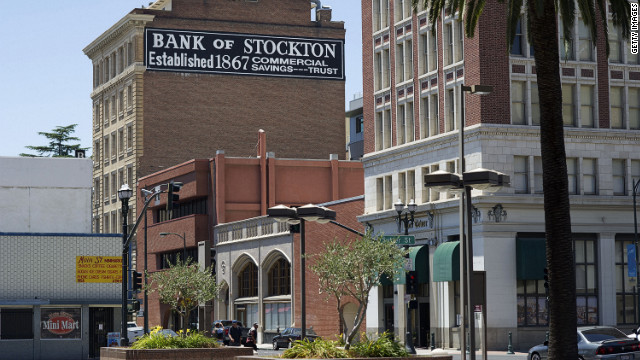
Why U.S. cities are going bankrupt
By Fareed Zakaria
I was struck last week to hear that the city of San Bernardino, California is declaring bankruptcy. It follows similar moves in the past month by Mammoth Lakes and Stockton, also in California. Before them it was Harrisburg, Pennsylvania, Jefferson County, Alabama, Central Falls, Rhode Island – the list continues.
What in the world is going on? Companies go bankrupt all the time – but what happens when a city goes under?
In reality, the two aren’t that different. Companies file for what’s known as “Chapter 11” – a provision which enables them to renegotiate deals, to downsize, to fire people. But filing Chapter 11 also gives them the option of liquidating – or breaking up. That would be essentially impossible for a city – it also happens to be unconstitutional. So cities go for “Chapter 9,” which covers municipalities: that’s cities, but also towns, villages, taxing districts and utilities.
641 cases of municipal bankruptcy have been filed since Chapter 9 was created. Most have been smaller cases involving utilities. But when an entire city goes bankrupt, things are much more complicated. It affects public sector jobs and vital services like fire and police departments.
Now, naturally, we assume all bankruptcies are a bad thing. They're humiliating, they impact business, they’re difficult to recover from. The situation is far from ideal. But it’s actually not without its benefits.
Take for example San Bernardino. It was running a $45 million deficit (on a $130 million budget.) But its creditors – workers and retirees – were unwilling to help out. The best the unions were able to do was to offer what they thought was a major concession: allowing newly-hired public safety workers to retire with 90 percent of their salary at the age of 55 – instead of 50, which had been the earlier deal!
That won't work in a chapter 9 bankruptcy. An independent judge brings all parties to a table where an agreement has to be reached – no matter how painful. And, we need some of those painful decisions – not just at the federal level, but at local and state levels as well. At its heart, the bankruptcies you keep hearing about these days aren’t about taxes being too low or spending on city services being too high – they're about pensions.
California's pension-related costs rose 20-fold in the decade since 1999. This frightening trend is true almost everywhere in America. And it’s simply not sustainable. A recent Pew research survey found that the gap between state assets and their obligations for public sector retirement benefits is $1.38 trillion. It rose by 9 percent in 2010 alone – and it will likely keep rising until these obligations are renegotiated.
The truth is America is sacrificing its future to pay for its past. To keep up with burgeoning pensions, states and cities are slashing services. It's also feeding into the unemployment problem. State and local governments have 445,000 fewer workers today than in 2007. Even if you exclude teachers from that number, we have 231,000 fewer workers.
For decades now, local governments have doled out patronage by increasing pension benefits – these costs impact the budget years later, when the officials who gave the benefits are safely retired themselves. We're now having to reckon with those choices.
I'm not saying bankruptcies are a good thing. But they are a mechanism that allows us to admit an emergency and renegotiate the deals that are, well, bankrupting the country.
Watch "Fareed Zakaria GPS" Sunday at 10 a.m. and 1 p.m. ET
No comments:
Post a Comment